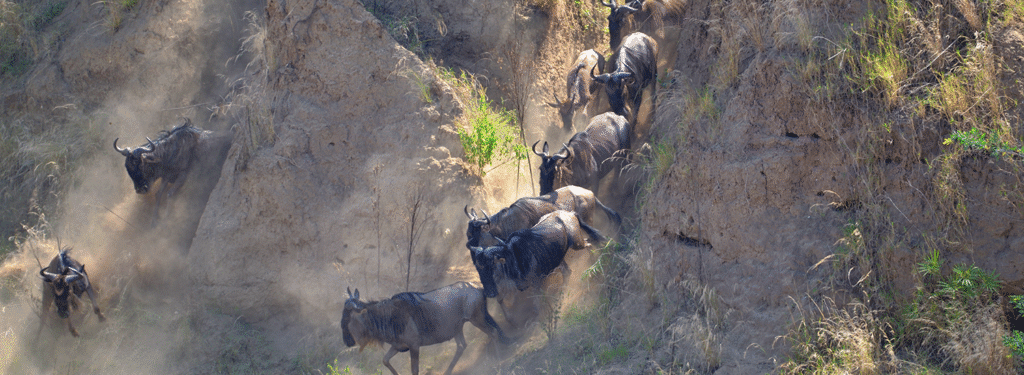
Why the Great Migration is the World’s Greatest Wildlife Show
- bySusan Wanjiru
- - May 1, 2025
Home » Blog » Why the Great Migration is the World’s Greatest Wildlife Show
The Masai Mara Migration, often hailed as the greatest wildlife spectacle on Earth, is part of the larger Great Migration—a continuous, circular journey of over 1.5 million wildebeest, along with hundreds of thousands of zebras, gazelles, and elands, across the vast plains of Tanzania’s Serengeti and Kenya’s Masai Mara.
The most dramatic and awe-inspiring phase of this migration takes place in the Masai Mara between July and October, when massive herds thunder northward from the Serengeti, drawn by the promise of greener pastures in the Mara’s fertile plains. This period is the prime time to witness the migration, especially the iconic Mara River crossings, where thousands of wildebeest plunge into crocodile-infested waters in a desperate dash for survival. These crossings are chaotic, breathtaking, and heart-pounding moments of raw nature that define the very essence of the African wilderness.

The timing of the crossings can never be predicted to the day, as it depends on rainfall patterns and grazing availability. However, mid-July, August and mid-September are often considered the best months to witness large-scale river crossings, especially near key points like the Talek River and the Mara River. Visitors may also observe intense predator action during this time, as lions, cheetahs, leopards, and hyenas lie in wait, capitalizing on the chaos.
Beyond the river crossings, the plains of the Masai Mara during migration season transform into a living sea of hooves and horns, stretching as far as the eye can see. This abundance of prey attracts an extraordinary concentration of predators, offering visitors unmatched opportunities to witness dramatic hunts, big cat interactions, and the circle of life in motion.
For those seeking to experience the migration away from the crowds, many of the private conservancies bordering the reserve, such as Olare Motorogi, Naboisho, and Mara North—offer exclusive front-row access to migration herds as they spill into conservancy lands. Here, guests can enjoy guided walking safaris, off-road game drives, and night drives, all while avoiding the larger tourist influx found in the central areas of the main reserve.

In essence, the Great Migration in the Masai Mara is not just an event—it’s an ancient rhythm of life, a testament to survival, instinct, and the awe-inspiring scale of the natural world. Whether it’s the thunder of hooves across golden grasslands or the silent standoff between predator and prey, witnessing it is a once-in-a-lifetime experience that leaves an indelible mark on the soul.
